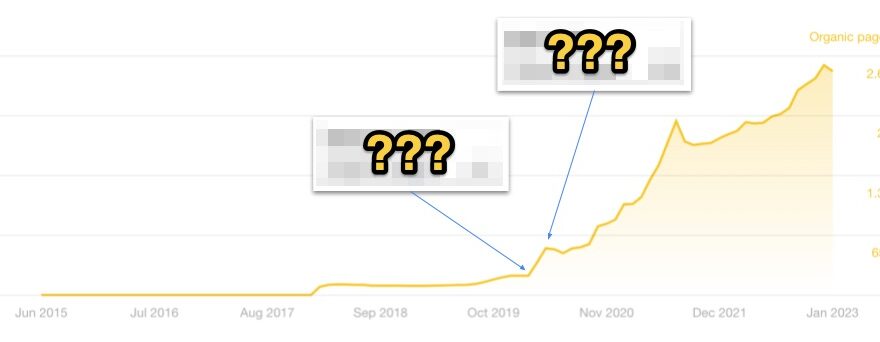I keep seeing a “how they won” analysis of Monday(dot)com as a case study for great SEO:
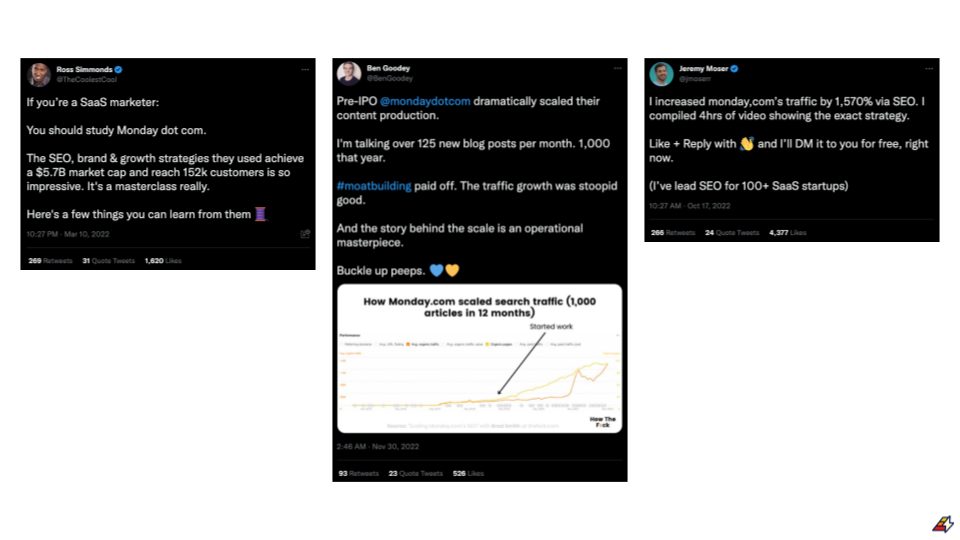
Out of pure curiosity, I did some digging and I think it might be one of the worst SaaS SEO playbooks you could possibly follow.
First, a caveat:
The campaign that Monday ran internally and through agencies *is* a masterclass in large volume content production.
But not one that we can really learn from, and certainly not one 99.99% of us should copy.
So, why do this whole analysis?
Marketing = Pattern Recognition
False learned patterns = Bad future decisions
“Well Monday did it and it worked for them” should rarely (never?) be said by a content or SEO team.
Ever.
3 important factors that can’t be ignored here:
- Survivorship bias
- Timing
- (Actual) growth levers – this is the most important part and the part I’m (intentionally) leaving until last
The risks of “resulting”
We must be wary of “resulting” here.
It’s easy to look a what appears to be a winning graph and fall in a logical error:
Resulting says if the outcome was good, the decision-making was good.
Outcome bad? Decisions bad.
That’s almost never right.
Sometimes you have a great strategy and things outside of that strategy cause you to lose.
Same with an ineffective strategy that somehow succeeds.
Which brings us to survivorship bias…
1. Survivorship Bias
Because Monday has big revenue/IPO, it’s easy to assume they had a great SEO and content strategy.
This happens *quite* often in teach startups.
Marketing pattern recognition must never be based on on only companies that grow the biggest/fastest.
Survivorship eats strategy.
When we assume that success tells the whole story, we don’t adequately consider past failures, like this:

I contend that Monday thrived despite their SEO strategy. Not because of it.
A big secret of their sauce was timing…
2. Timing
Monday is/was a blitz-scaling company. They raised massive rounds in 2017, 2018 and 2019:

Near impossible in the “Post-VC” era.
If your entire strategy hedges on you raising 25M in 2023, 50M in 2024 and 150M in 2025…
You’re gonna have a bad time.
VCs revealed Monday spent 80% of ARR on paid acquisition.
The wildest part?
Monday didn’t even touch SEO until after raising $225M.
SEO had a negligible impact on their 2021 IPO.

If you aren’t a blitzscaling company, can’t raise $225M & can’t time travel back to 2015-2017… 🤷♂️
Now only the part that all my fellow SEO, content and growth marketing nerds came for.
3. (Actual) growth levers
Again, the campaign that Monday ran internally and through agencies *is* an operational masterclass.
They did a TON of work.
But we all know that volume =/= success.
It was 2+ agencies, 20+ writers, and the internal Monday team.
This is what a $3-5M+ SEO campaign looks like. 👇
Step 1: We know that backlinks are the biggest ranking factor when it comes to SEO.
And I’d already looked at their content production (it’s… a lot)
So now it was time to look at backlinks…
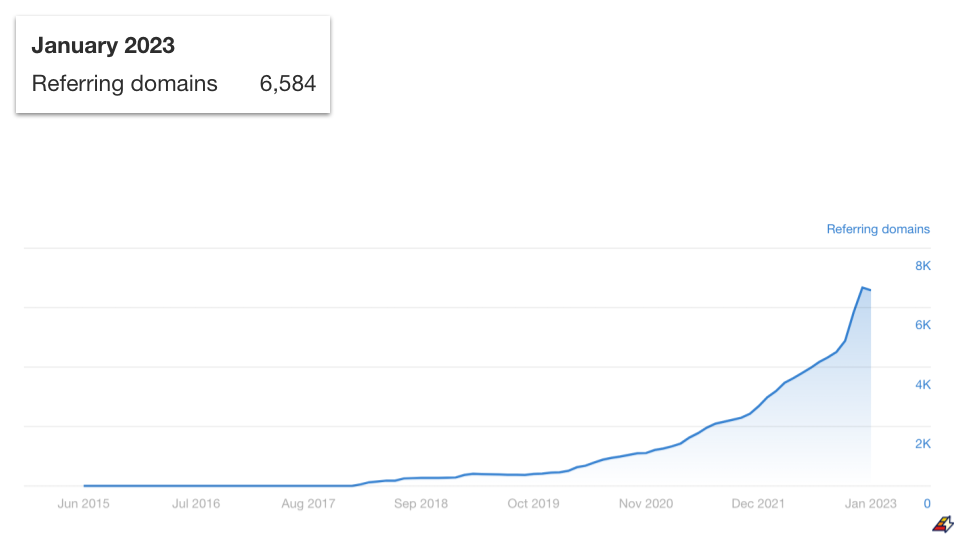
I noticed this interesting time period where Monday had really started to ramp up content product in early 2020:

I hypothesized that I would see a similar large uptick in backlinks during that time…
Was I right?
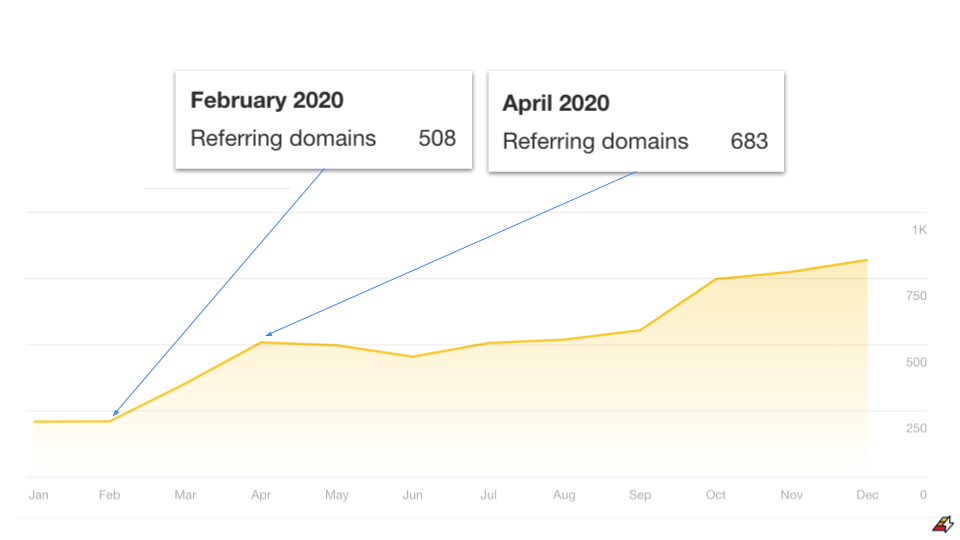
Spoiler: I was right.
Their total referring domains grew 34% in that one month.
How’d they do it?
LOTS of people love to show that because Monday ranks well for “project management” they must be winning the SEO game:

So let’s use that post as an example for backlink analysis and how Monday built links from 183 websites in a single month (with very little organic traffic coming to their blog).
The pillar post that everybody hangs Monday’s hat on got links from 24 websites before it ever got any organic traffic:
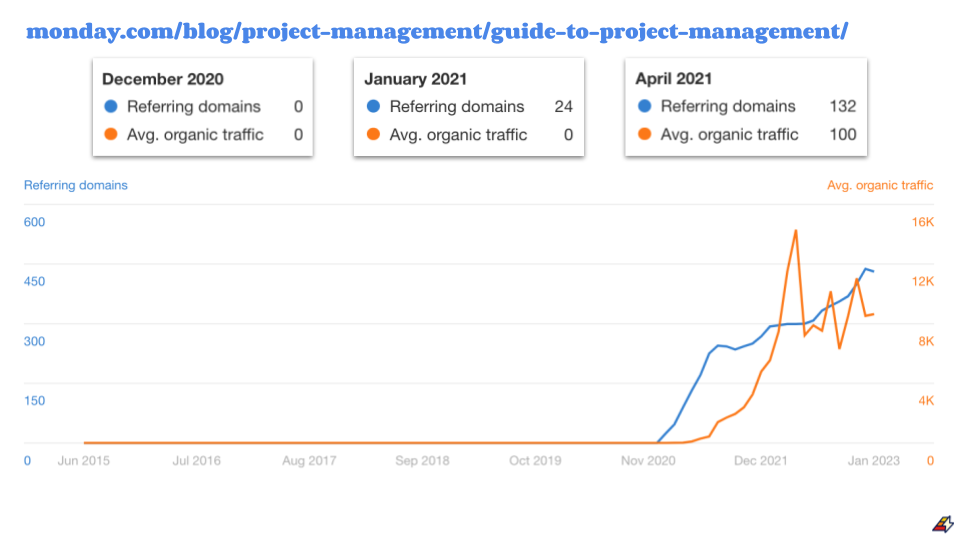
In fact, before it had even 100 month site visitors.
How?
Monday paid for (at least) mid 5-figures in backlinks.
To this ONE post.
Now look, I don’t care about people buying links.
It’s the game. I’ve begged for and bought links for years.
Google is evil. Manipulate their algorithm however you want.
But these paid links get left out of every “how they won” analysis that I see.
And we gotta include it (because again – bad patterns make bad marketers).
And before everybody comes for me (HOW DO yoU Kn0w they were pA!d?)
Here’s the first links that post got:

If you look at them, the Monday post went live in January of 2021.
The first posts linking to them were from 2014 and 2020.

These are (very clearly) paid links.
Again, no judgment, but let’s not pretend it was the “content production” alone that caused the massive growth we saw.
If you want to cook with a recipe, you deserve to know ALL the ingredients.
The idea that this post ranked well because of anything other than $100k+ in backlinks is… inaccurate.
(Cost estimated from working with the same agency and knowing the cost of a good backlink)
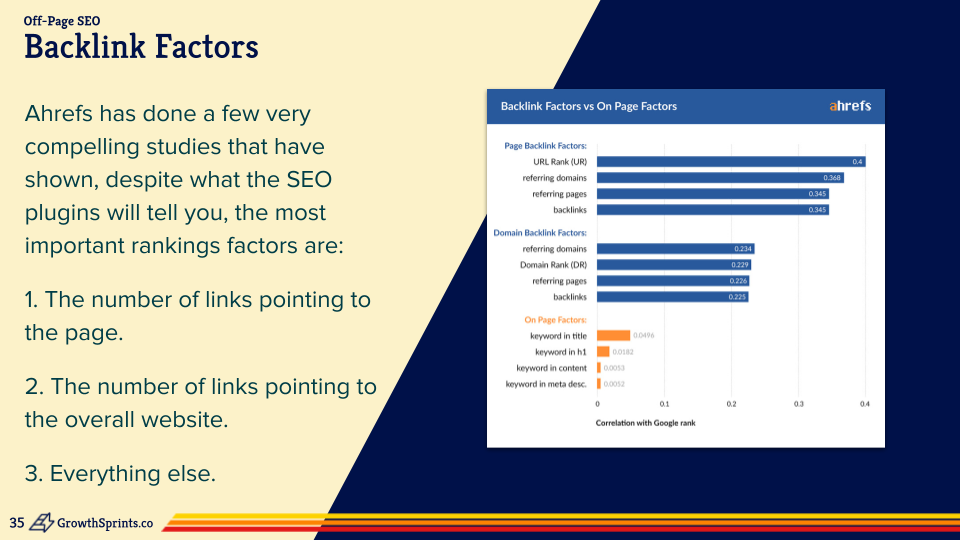
Ahrefs has done two studies that showed backlinks matter more than almost everything else.
If you want to win at this speed, ya gotta pay. I get that.
The agency that did the content and link work for Monday *did* get results.
But… are there better ways to do this?
Maybe 👇
There might be a better way…
First, as of January 2023, 1600 pages on Monday’s blog get less than 100 visitors per month from search.
That’s… a lotta wasted content production.

Let’s compare them to their direct competitors…
Monday has 3x the blogs of Clickup and nearly 5x that of Asana
Yet…
Clickup has more traffic value.
Clickup has more referring domains. Asana near equal.
Clickup and Asana both have more organic traffic.
So… who would we rather study?
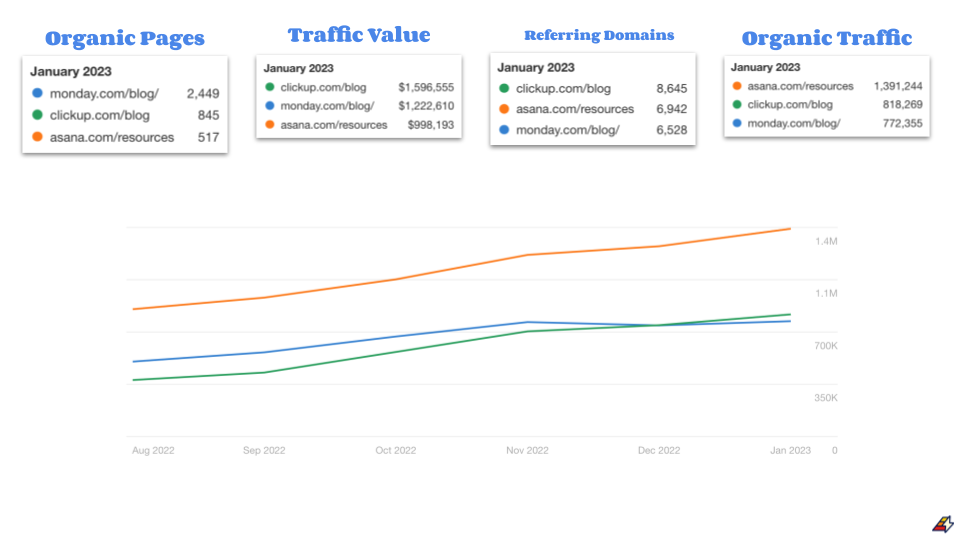
Summary:
- Survivorship → easy to ignore all other companies that do this & die
- Timing → Monday spent a ton & blitz-scale funding is less possible now than in previous years
- (Actual) growth → most of Monday’s content gets zero organic traffic & the pages that do… its links
The buying backlinks thing gets left out because nobody wants to get penalized by Google.
But their terms aren’t a moral compass.
Everybody is buying links at the highest levels of the SEO game.
I shared this with a friend and he summarized it well:
In marketing, imposter syndrome = not understanding how your heroes are cheating.
Ben Goldstein
I want you to win.
Now you know how Monday really won (did they?)…
Now you can win, too.
If you like posts like this, you might enjoy my weekly newsletter, Growing Up.
78.83% of our subscribers read EVERY issue.
Join thousands of other SaaS marketers here:
